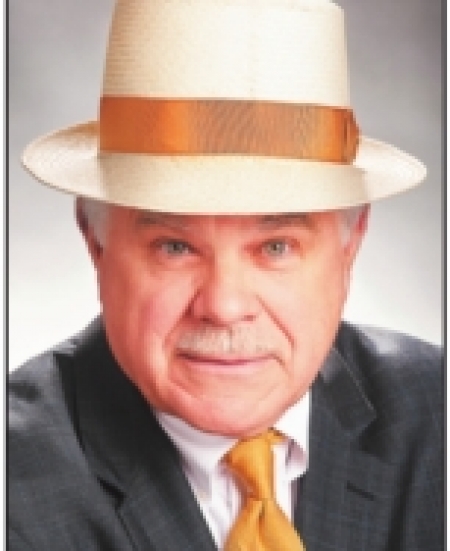WILL SHREVEPORT OVER-ENGINEER

The city of Shreveport is in the early stages of preparing an ordinance to regulate wireless telecommunications facilities, commonly referred to as small cell facilities. The briefing for the Council’s Infrastructure Committee indicated that the city would probably introduce an ordinance that is much greater in scope than other Louisiana cities.
Wireless facility ordinances have been adopted in New Orleans, Baton Rouge, Lafayette and, recently, Bossier City.
And if this sounds vaguely familiar, one need only look to the much-heralded Unified Development Code (UDC) enacted last year by the Shreveport City Council. Lauded to be an easy-to-read and -follow economic development tool, the Shreveport UDC has proven to be a complex, timely and costly development/zoning code.
The Shreveport-Caddo Metropolitan Planning Commission (MPC) regulates the UDC, which is another problem in and of itself. To say the MPC has been “userfriendly” will be a gross misstatement if not outright total misrepresentation.
The Shreveport UDC and the Shreveport- Caddo MPC have not leveled the playing field for businesses looking to Shreveport versus Bossier. Early indications are the wireless facility ordinance could also be a business damper versus an incentive for Shreveport.
The presentation by the city of the need for this ordinance resembled in many ways the initial sales pitch for the ill-fated sports arena.
City attorney William Bradford gave opening remarks. Then assistant city attorney Karen Strand and outside counsel Julie Lafargue moderated a PowerPoint presentation.
Several representatives of wireless carriers spoke to the Council emphasizing the need for small cell facilities in Shreveport.
The concluding speaker was a wireless consultant working with the city to develop the small cell ordinance. He also had a PowerPoint presentation.
The consultant advised that Shreveport has had a 100,000-device increase in wireless traffic in the last five years. He indicated that the large (macro) cellular towers were becoming maxed out and would soon be unable to handle the wireless demand.
He also indicated that in the not-too-distant future, each city block in Shreveport would need a small cell facility. Large condo/ townhouse developments, as well as apartment complexes, would need additional facilities.
Bradford also advised that MPC staffer Adam Bailey was assisting in this project.
The city proposed an interim application process for small cell facilities in November of last year.
The resolution was circulated among wireless carriers. It was later withdrawn after the city decided to proceed with preparing a specific ordinance.
The carriers submitted a written report that pointed out several perceived problems, including the proposed fees. A model ordinance accompanied their written comments.
The city's initial draft ordinance proposed the following: application fee $1,000, $5,000 for MPC conditional use permit, $2,500 fee for modifications and an $8,500 expert deposit.
Bossier does not require an application to be reviewed or approved by the Bossier MPC.
Hopefully, the city will not propose an ordinance that deviates substantially from those adopted by Louisiana cities and the “model” ordinance. Shreveport already has a UDC that seemingly was drafted for a highincome, highly developed city with many bells and whistles (think Carmel, Calif.) that imposes many expensive requirements not reflective of Shreveport and its business climate.
The 300-page (plus) UDC was difficult to analyze, much less digest. And perhaps too much reliance was made on the MPC executive director, Mark Sweeney, rather than confidential input from the stakeholders, many of whom were reluctant to openly oppose the UDC for fear of future retribution by the MPC staff.
The model ordinance submitted by the wireless carriers was only 10 pages, and it is written in a fairly easy-to-understand format. It provides a good template to compare with what will soon be presented to the City Council and the general public.
Early indications for a user-friendly ordinance for the wireless carriers is not good. The city previously adopted a Lyft/Uber ordinance that was too onerous. Not until the ordinance was amended did Lyft open for business in Shreveport. Seemingly, the requirement of MPC approval should not be included in the ordinance or any other provisions substantially differing from those on the books in other cities.
John E. Settle Jr. has been a resident of Shreveport since January 1977. His articles appear regularly in local publications. He can be reached at 742-5513 or e-mail to: John@jesettle.com.
Wireless information
A
“small wireless facility” is defined as a wireless installation with an
antenna located inside an enclosure of no more than six cubic feet in
volume. In the case of an antenna that has exposed elements, the antenna
and all of its exposed elements would fit within an imaginary enclosure
of no more than six cubic feet. The wireless facility is mounted on an
existing power or light pole. The federal law places restrictions on the
ability of communities to regulate wireless telecommunications
facilities. Cities cannot enact a blanket ban on all wireless
facilities.
They can place reasonable restrictions on facilities in certain zones or areas. Cities cannot impose environmental standards on the facilities, provided the facility complies with FCC emissions regulations. Cities can, however, place reasonable controls over tower aesthetics, including height restrictions, setbacks, design and safety. Additionally, all permit costs must reasonably be related to the actual costs incurred by the city.
